




Other than gangbangers, powerwalkers, and teenagers, who hangs out at malls anymore?
Lately, no one.
THE ECONOMY
American shopping malls derive their income from discretionary consumer spending — the household income left over after debts, savings, and living expenses are paid.
In a recession, discretionary funds become scarce and in response, consumers will forego luxury goods like purses, high-end apparel, fragrances, expensive shoes, specialty electronics (Apple being the odd exception), and other high-end products typically sold at malls in favor of low-cost durable goods.
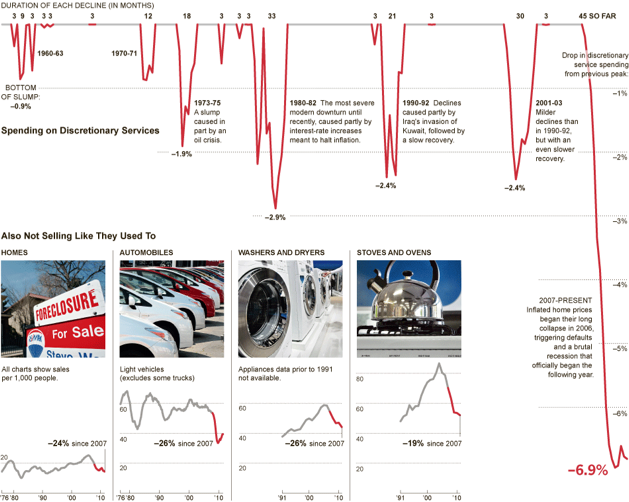
For example, a set of ceramic bowls at Williams-Sonoma costs $200 (I just bought some as a wedding gift), and while they are aesthetically pleasing and exceptionally well made, the task of containing food can be accomplished by plastic bowls available for $2 at Wal-Mart.
With growing concerns over unemployment, especially in typically stable sectors like finance, law, and healthcare, well-to-do upper middle class professionals are confronted with cost concerns even if they aren’t immediately affected by job loss. Luxury spending is curbed in favor of savings, and vibrant malls become ghost towns overnight.
Target, Costco, and Wal-Mart, however, tend to thrive in times of economic distress, absorbing newly cost-conscious luxury buyers moving downmarket to save money. It isn’t entirely uncommon, at least since 2009, to see parking lots at big-box discount stores filled with luxury cars, the same Cadillacs, Lexuses, and BMWs that were parked outside the mall just a couple years ago.
BIG-BOX COMPETITION
Large discount stores and outdoor strip malls are replacing large indoor shopping structures.
After World War II, Americans relocated to the suburbs and naturally, so did their shopping centers. No longer was it necessary to drive downtown, find parking, and deal with traffic and congested city blocks. Parking at a suburban mall is free, space is plentiful, and the interiors are secured and climate-controlled. Shopping malls continued to perform well through the end of the 20th century, becoming entertainment destinations in addition to shopping centers.
The West Edmonton Mall in Alberta was the world’s largest mall from the mid-80s through the end of the century. The Mall of America in Minnesota, currently America’s largest, offers 96 acres of space featuring four levels of stores, amusement rides, an aquarium, and coming soon, a luxury hotel.
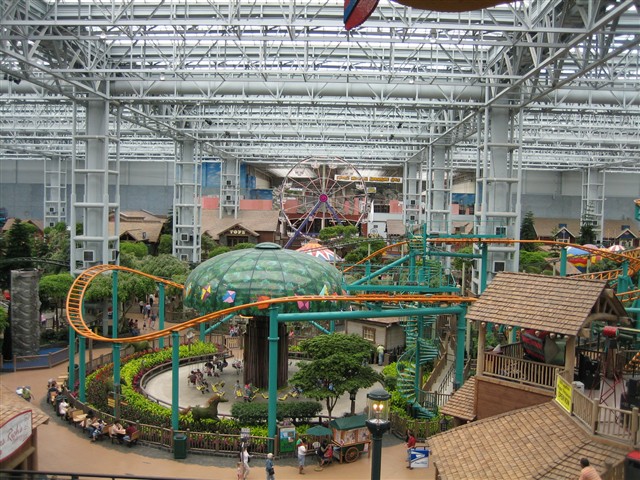
Inexplicably, Mall of America hasn’t suffered at all, with plans to expand.
DOWNTOWN REVITALIZATION
Urban developers, concerned about the exodus of retail from downtown city centers, developed skywalk systems to compete with malls, offering an all-indoor retail experience using covered bridges that bypass intersections and connect retail buildings. Parking was and still is a problem for most.

While most attempts at restoring inner-city retail have failed, a handful of development efforts have succeeded. Spokane, Washington’s Riverpark Square is a multilevel structure located in the heart of the city’s downtown. Restaurants occupy the main level while upper floors are filled with shops and big-name anchors like Nordstrom. At the very top is an AMC movie theater. Parking is still an issue, but an attached $1 parking garage negates the need to search block after block looking for a space. Running out every hour to fill the meter is unnecessary. Additional restaurants and retail locations have opened nearby, reversing years of decline.
Riverpark Square’s success is made possible, in part, by snooty south side residents who tend to disfavor neighborhood retail development (aside from grocery stores) and any accompanying traffic, pollution, and congestion.
AGING STRUCTURES
I live in Chesterfield, Missouri, a second-ring St Louis suburb incorporated in 1988, half an hour away from downtown St Louis. Most of us enjoy the physical separation from the crime, poverty, corruption, and mismanagement that plague St Louis City. While the trade-off has been longer commutes (and the expenses that come with it), several firms have opened suburban offices where taxes are lower, parking is easier, property is cheaper, and employees who already live in the suburbs are nearby. Additionally, It’s easier to attract and retain talented people if their commutes are shorter.
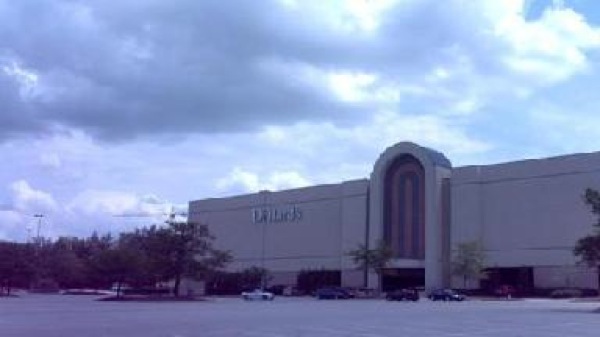
Before World War II, the Chesterfield area was known as Gumbo Flats, a rural part of the metro area where US Highway 40 terminated. Routine flooding in the valley limited development to farms and the Spirit of St Louis Airport, used primarily for crop dusters and personal aircraft.
As Chesterfield’s population grew, so did it’s shopping needs, and the Chesterfield Mall opened in 1976. Chesterfield Mall carries the distinction of being the largest mall in the metro area, though it’s also one of the emptiest and least populated.
JC Penney closed years ago. Borders bookstore, the only competitor to Barnes and Noble across the street, closed earlier this summer. Wapango, a pan-latin restaurant, disappeared last year. Dillard’s, Sears, and Macy’s, the three remaining anchor stores, are scarcely populated compared to other metro area locations. Macy’s tends to stock most of its inventory at busier stores, leaving the Chesterfield location with a limited selection.
Fortunately, The Cheesecake Factory, Houlihan’s restaurant, and the AMC theater continue to perform well, filling the parking lot every weekend. Unfortunately, they may as well be closed from Monday through Thursday.
While the mall here in Chesterfield isn’t as old as most American malls which date back to the 1950s and 1960s, a lack of funds and an apparent lack of care have resulted in poor maintenance. Ceilings and walls are dirty and cracked with fixtures in desperate need of refurbishing and the parking lot is riddled with potholes (my 1998 Cadillac Seville was swallowed by a large pothole, prompting me to file a claim). Inside, smaller stores are vacant, kiosks are quiet, and corridors are empty.
This is this antithesis of the post-war American dream.
I neglected to notice the decay years ago because I rarely walked through the mall’s interior — I’d buy Craftsman tools at Sears and go home immediately after. In 2010, I considered opening a retail kiosk and changed my mind after realizing how risky it would be to open a retail location in a space where customers were scarce 80% of the time. I’d earn a profit between Thanksgiving and Christmas while breaking even (or worse) the rest of the year.
STRIP MALL DEVELOPMENT
Exacerbating the problem is ongoing strip mall development in the Chesterfield Valley. Chesterfield Commons, known by some as Boone’s Crossing, completed construction in 2005 and remains the largest outdoor strip mall in America. At 60mph, it takes three minutes to drive across the entire complex.
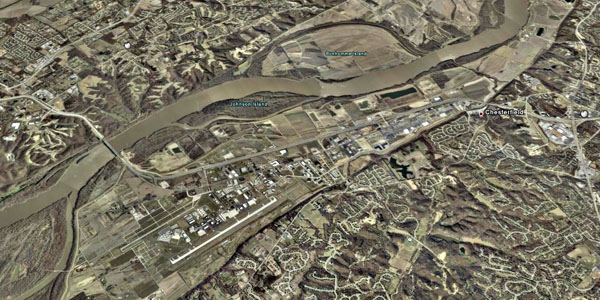
Businesses in or near the complex include Home Depot, Lowes, Wal-Mart, Target, Sam’s Club, Best Buy, Dick’s Sporting Goods, Wehrenberg Theaters, several banks, several restaurants, Kemp Auto Museum, a Ferrari-Lotus-Lamborghini-Bentley-Aston-Martin-Rolls Royce dealer, a Ford dealer, a Kia dealer, and several office buildings. Aldi and Big Lots have arrived this year to serve bottom-end bargain shoppers.
All of this development was made possible by a recently reinforced levy — this entire area was under ten feet of water in 1993. It’s a risk, and if a “500 year” flood were to ever happen, the valley and the city of Chesterfield could be devastated.
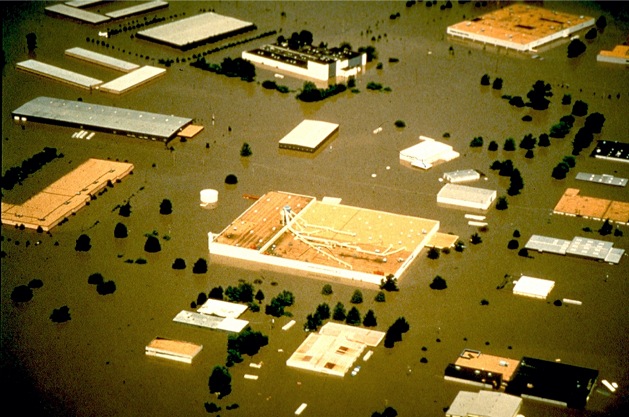
Proponents of the new Chesterfield Valley outlet malls say the differing selection of outlet stores will have little or no impact on Chesterfield Mall, and that the strip mall will attract shoppers from as far as three hours away, attracting different kinds of customers far outside of Chesterfield. The mall, they argue, will continue to serve local consumers.
Suburban malls in middle and northern America, suffering from economic conditions and the ongoing transition to big-box retail and outdoor strip developments, are struggling for relevance in an environment where malls are no longer a destination or a source of entertainment. They’ve become large, empty shells.
Upscale consumers are willing to drive further, even if sales taxes are higher, to shop in nicer environments that offer wider selections of goods and services. New developments quickly displace old ones, leaving carcasses of dead malls behind.
The automobile and metropolitan highway systems, for better or worse, have given consumers the freedom and mobility to vote with their wallets, forcing property developers, towns, and retailers to compete on cost, selection, and aesthetics. Unfortunately, several have been left behind.
For more information on dead or declining malls, see deadmalls.com.


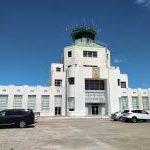













The Mall of America thrives because it wisely decided to market itself as a destination for amusement rather than strictly a place to shop. It’s essentially the equivalent of a TV shopping channel. A strange part of the Galaxy where consumers not only tolerate commercials, they embrace them 24 hours at a time.